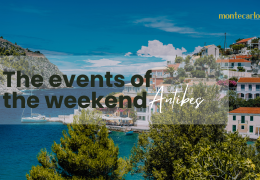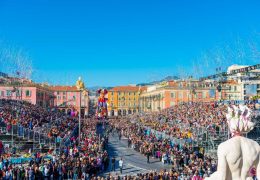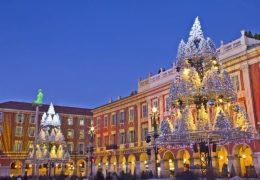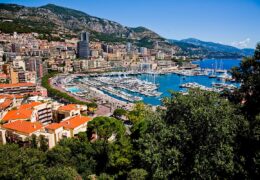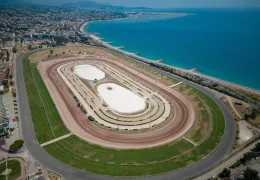The Rocca of Èze
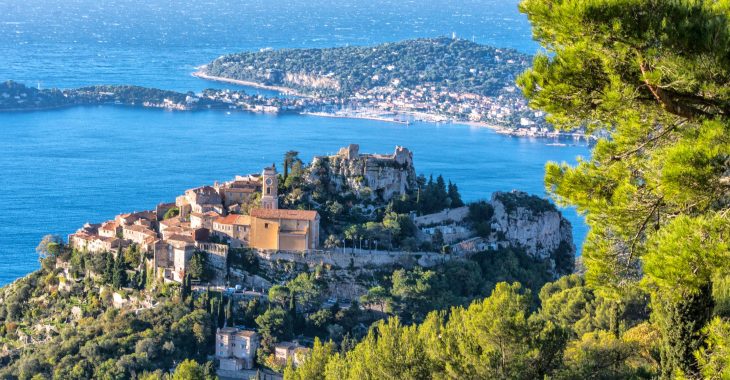
This definition – vaguely but deliberately obscure – applies to a small village on the French Riviera that is one of the most beautiful places in the region, if not all of France. This site has already touched on it in relation to two Michelin-starred restaurants located there.
But let’s take it step by step. Along the cliffs overlooking the stretch of coast between Nice and Monaco, three “corniches” (coastal roads) run, roughly parallel, each at a higher elevation (the last one partially following the path of the ancient “Via Julia Augusta”).
Halfway along the “moyenne” (the middle one), on top of a hill at 429 meters above sea level, lies the village of Èze, an ever-popular destination for tourists, drawn by its beauty and the magnificent sea views. It is said that the original site – lower than the current one – was first occupied by the Phoenicians, who built a temple to the Egyptian goddess Isis (hence the name), later by the ancient Ligurians, and then became part of the Roman Liguria (IX Regio).
In medieval times, to fend off various invasions, the locals took refuge at the top of the hill, where the village remains today. Under the rule of the Duchy of Savoy in modern times, it was annexed by France in 1860.
The village center is like a labyrinth, with cobbled streets and alleys lined with medieval houses that have been restored, small gardens, shops, and workshops. On the slopes, you will find more recently built houses and villas.
There are two churches worth visiting. First, the Chapelle des Pénitents-Blancs (an ancient lay confraternity, officially called Chapelle de la Sainte-Croix), inside which is a “Crucifixion” by the Brea school and the “Madone des Forêts,” named because the child in her arms holds a pinecone. The chapel was built in the early 14th century. Then, there is the Église de Notre-Dame de l’Assomption, dating from the 18th century, an elegant example of Nice Baroque architecture, with its impressive central nave. A curious pulpit displays an outstretched arm holding a Crucifix, and the church features a particularly beautiful “Adoration of the Magi” in the Italian style.
There are many more attractions in Èze, including the eponymous “Jardin” at the top of the rock. There are many reasons to visit it: a thematic path with fifteen female sculptures, an extraordinary collection of succulents, agaves, aloe, euphorbias, giant cacti, the ruins of the ancient castle, and the breathtaking view over the Riviera below.
Unexpectedly, there are also two recently created perfume factories, which fit well with the fragrances and aromas that fill the air. The “Parfumerie Fragonard” is a workshop specializing in soap-making and cosmetics, which can be visited for free, along with the adjoining store, where products are sold at factory prices. There is also the “Parfumerie Galimard,” which can also be visited, along with its small “museum” filled with perfumes. Additionally, visitors can participate – for a rather high cost – in a perfume-making workshop.
Another place to explore is the “Parc départemental de la Rèvere,” which has a botanical trail to discover the plants of the Mediterranean scrub, a natural history museum, and the “Fort de la Revère,” built in 1870 to protect Nice from above. The park also features the “Astrorama de la Trinité,” equipped with several telescopes for celestial observation.
Finally, there is the “Sentier de Nietzsche,” which connects the Èze-Bord-de-mer beach to the original hilltop village. This panoramic, rocky, and steep path is named after the German philosopher who walked it while conceiving the third part of his masterpiece Thus Spoke Zarathustra.
A place almost mystical in nature, where the only obstacle to reflecting and contemplating its beauty is the enormous influx of tourists. It is, therefore, highly recommended to visit during the early morning or late afternoon.



